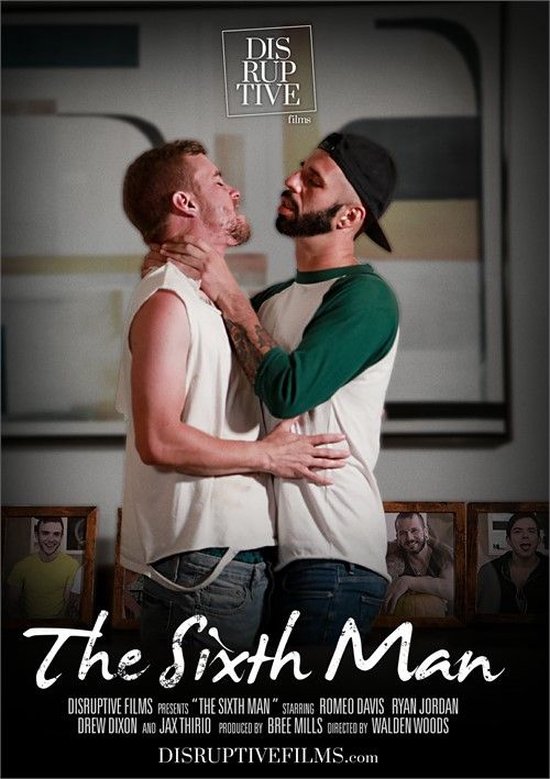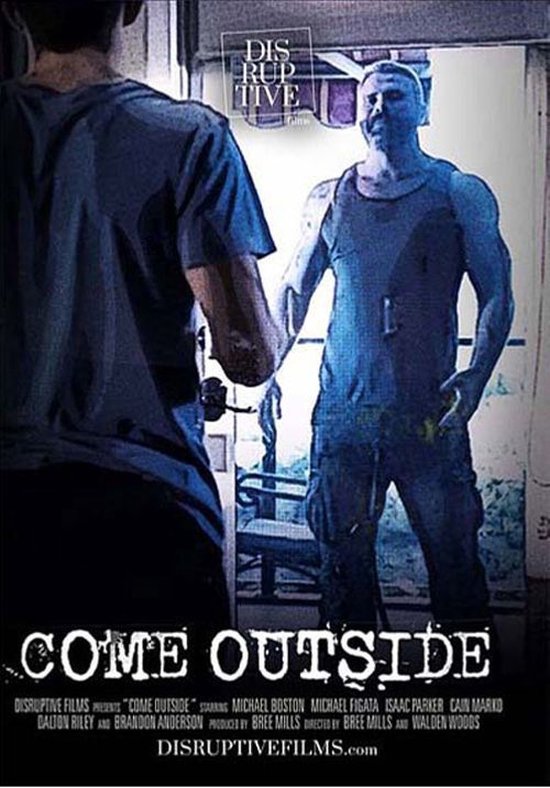Let’s be real, the world of cinema has been shaken up in ways we never thought possible. Disruptive film gay is no longer a niche topic—it’s a powerful movement that’s reshaping the way we see storytelling, representation, and diversity on screen. From groundbreaking films to trailblazing directors, this is more than just a trend; it’s a cultural revolution. So buckle up because we’re diving deep into how these films are changing the game.
When we talk about disruptive film gay, we’re not just talking about movies with LGBTQ+ themes. We’re talking about films that challenge norms, smash stereotypes, and create space for voices that have been ignored for far too long. These movies are bold, unapologetic, and unafraid to tackle tough topics. They’re not just entertainment—they’re a form of activism.
And let’s not forget the impact they’ve had on audiences worldwide. Whether you’re part of the LGBTQ+ community or an ally, these films resonate on a personal level. They make you think, feel, and sometimes even cry. But most importantly, they inspire change. So grab your popcorn and let’s explore this incredible world together.
Read also:A Young Womans Bold Move On Tiktok Sparks Conversations Across Mzansi
What Makes a Film Disruptive?
First things first, what exactly makes a film disruptive? It’s not just about being different or edgy. A truly disruptive film challenges the status quo, pushes boundaries, and forces viewers to question their beliefs. In the case of disruptive film gay, it’s all about breaking down barriers and creating authentic representation.
Think about it. For years, LGBTQ+ characters were often relegated to side roles, caricatures, or tragic figures. But disruptive films have flipped that script. They give queer characters depth, complexity, and agency. They tell stories that are raw, relatable, and unfiltered. And they do it in ways that make you sit up and pay attention.
Key Characteristics of Disruptive Films
Here are some of the hallmarks of disruptive films:
- Authentic Representation: These films don’t shy away from showing the real lives of LGBTQ+ people. They tackle issues like identity, love, family, and acceptance with honesty and courage.
- Challenging Stereotypes: Forget the tired tropes and clichés. Disruptive films redefine what it means to be queer, showcasing a wide range of experiences and identities.
- Emotional Impact: These movies don’t just entertain—they move you. They make you laugh, cry, and everything in between.
- Community Building: Many disruptive films serve as a source of inspiration and solidarity for the LGBTQ+ community, fostering connections and understanding.
The Rise of Disruptive Film Gay
Over the past few decades, we’ve seen a surge in disruptive film gay. This isn’t just a coincidence—it’s the result of decades of hard work, activism, and creativity. Filmmakers, actors, and producers have been pushing for more diverse representation, and audiences have responded in droves.
But it hasn’t been an easy journey. For years, LGBTQ+ stories were often met with resistance from studios, networks, and even audiences. Many films faced censorship, criticism, or outright rejection. Yet despite these challenges, the movement persisted and grew stronger.
The Turning Point
So when did things really start to change? Some point to the early 2000s as a turning point. Films like Boys Don’t Cry and Beautiful Thing paved the way for more authentic and nuanced portrayals of LGBTQ+ lives. But it was really in the 2010s that things took off. Movies like Moonlight, Call Me By Your Name, and The Miseducation of Cameron Post showed that queer stories could be both critically acclaimed and commercially successful.
Read also:Nadia Nakai Celebrates Akarsquos Birthday With His Family A Heartfelt Tribute
And let’s not forget the role of streaming platforms. Services like Netflix, Hulu, and Amazon Prime have given filmmakers more freedom to tell their stories without the constraints of traditional Hollywood. This has led to a wave of innovative and boundary-pushing films that might not have seen the light of day otherwise.
Impact on the Film Industry
Disruptive film gay hasn’t just changed the way we see LGBTQ+ stories—it’s changed the entire film industry. Studios are now more willing to take risks on diverse projects, and audiences are more open to exploring different perspectives. But it’s not just about box office numbers. These films are sparking conversations, challenging prejudices, and creating a more inclusive world.
For example, films like Rafiki and Tangerine have brought attention to LGBTQ+ issues in countries where being queer is still illegal or heavily stigmatized. They’ve given a voice to those who have been silenced and shown the world that love knows no boundaries.
Challenges and Controversies
Of course, not everyone is happy about the rise of disruptive film gay. Some critics argue that these films are too political or divisive. Others claim they’re pushing an agenda or trying to force change too quickly. But the truth is, these films are simply reflecting the world we live in. They’re shining a light on issues that have been ignored for far too long.
And let’s be honest, change is never easy. But if we want a more just and equitable society, we need to embrace diversity in all its forms. Disruptive films are doing just that, and they’re not backing down anytime soon.
Key Players in the Disruptive Film Movement
Behind every great film is a team of talented individuals who bring it to life. Let’s take a look at some of the key players in the disruptive film gay movement:
- Barry Jenkins: The director of Moonlight, Jenkins has become a household name for his powerful storytelling and commitment to diversity.
- Luca Guadagnino: Known for Call Me By Your Name, Guadagnino has a knack for capturing the beauty and complexity of love.
- Desiree Akhavan: With films like The Miseducation of Cameron Post, Akhavan has become a leading voice in queer cinema.
- Dee Rees: The director of Pariah, Rees has been a trailblazer for LGBTQ+ stories in both film and television.
Spotlight on Barry Jenkins
Let’s zoom in on Barry Jenkins for a moment. Born and raised in Miami, Jenkins has always been fascinated by the intersections of race, class, and sexuality. His breakout film, Moonlight, won three Academy Awards and put LGBTQ+ stories on the global stage. But Jenkins isn’t resting on his laurels. He continues to push boundaries with films like If Beale Street Could Talk and The Last Black Man in San Francisco.
Here’s a quick look at his background:
| Full Name | Barry Michael Jenkins |
|---|---|
| Date of Birth | November 8, 1979 |
| Place of Birth | Miami, Florida, USA |
| Notable Works | Moonlight, If Beale Street Could Talk |
Disruptive Film Gay: The Stats and Numbers
Numbers don’t lie, and the stats surrounding disruptive film gay are pretty impressive. According to a 2022 report by GLAAD, LGBTQ+ representation in major studio films has increased significantly over the past decade. In 2012, only 14% of films featured LGBTQ+ characters. By 2022, that number had jumped to 25%. That’s progress worth celebrating!
But it’s not just about quantity—it’s about quality. More and more films are telling authentic, well-rounded stories that resonate with audiences. And the numbers back that up. Films with LGBTQ+ characters tend to perform better at the box office, with many exceeding expectations and earning critical acclaim.
Why Representation Matters
So why does representation matter? Because it shapes how we see ourselves and others. When we see people like us on screen, it validates our experiences and gives us hope. It tells us that we’re not alone and that our stories matter.
And it’s not just about the LGBTQ+ community. Representation benefits everyone by fostering empathy, understanding, and acceptance. It breaks down walls and builds bridges, creating a more inclusive and compassionate world.
Future Trends in Disruptive Film Gay
Looking ahead, the future of disruptive film gay looks bright. We’re seeing more diverse voices behind and in front of the camera, more funding for LGBTQ+ projects, and more platforms willing to take risks on innovative stories. But there’s still work to be done.
One trend to watch is the rise of intersectional storytelling. Filmmakers are increasingly exploring the intersections of race, gender, sexuality, and class, creating stories that reflect the complexity of real life. We’re also seeing more films that focus on underrepresented communities within the LGBTQ+ spectrum, like trans and non-binary individuals.
Challenges Ahead
Of course, there are challenges to overcome. Funding remains a hurdle for many LGBTQ+ filmmakers, especially those from marginalized communities. Distribution can also be a struggle, with many films struggling to find an audience beyond festivals and streaming platforms.
But despite these challenges, the momentum is undeniable. Disruptive film gay is here to stay, and it’s only going to get bigger and better.
How You Can Support Disruptive Film Gay
So how can you get involved and support this incredible movement? Here are a few ideas:
- Watch and Share: Seek out disruptive films and share them with your friends and family. The more people who see these movies, the more impact they’ll have.
- Support LGBTQ+ Filmmakers: Follow and promote the work of LGBTQ+ directors, actors, and producers. Attend their screenings, buy their merchandise, and spread the word.
- Engage in Conversations: Talk about these films with others. Discuss the themes, characters, and messages. The more we talk about them, the more we normalize LGBTQ+ stories.
Final Thoughts
Disruptive film gay is more than just a genre—it’s a movement. It’s about challenging norms, amplifying voices, and creating a more inclusive world. These films have already made a huge impact, but there’s still so much more to do.
So the next time you’re looking for a movie to watch, consider choosing a disruptive film gay. You might just find yourself inspired, moved, and ready to make a difference. And hey, if you’re feeling extra adventurous, why not try your hand at filmmaking yourself? Who knows—you might just be the next Barry Jenkins or Luca Guadagnino!
Table of Contents
- What Makes a Film Disruptive?
- The Rise of Disruptive Film Gay
- Impact on the Film Industry
- Key Players in the Disruptive Film Movement
- Disruptive Film Gay: The Stats and Numbers
- Future Trends in Disruptive Film Gay
- How You Can Support Disruptive Film Gay
Conclusion
In conclusion, disruptive film gay is a powerful force that’s changing the landscape of cinema. It’s giving a voice to those who have been silenced, creating space for diverse stories, and inspiring change. These films aren’t just entertainment—they’re a form of activism that’s making the world a better place.
So what are you waiting for? Dive into this incredible world and see for yourself. And don’t forget to leave a comment, share this article, or check out some of our other content. Together, we can keep this movement going strong. Now go out there and disrupt the status quo!


